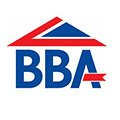External Rendering: The benefits of rendering a property
The art of external rendering can be traced back to well before ancient Roman times when mixtures of lime and sand were used. As you might imagine the craft has evolved and we can now see the external rendering of a property has become quite popular in the UK in recent years.
The potential of external render to fully transform an old house or even a new-built is undoubtedly worth exploring. Especially if combined with external wall insulation, which can further add value in terms of improving the property’s thermal performance and appearance. Thus, we’ve prepared a list of the main benefits of rendering a house and help answer your question “Should I render my house?”.
It helps the property breathe and prevents future damp problems
What does it mean for a house or a building to be able to breathe? All buildings absorb and release moisture, which is called breathability. Rain can affect the moisture levels of the buildings, however, it also comes from our day-to-day activities that release water vapour. This water usually moves inside or outside through the walls of the property.
Where the external render comes into play is that it still allows for moist air to escape outside through the walls, which will prevent condensation inside, but its key purpose is to not let moisture penetrate from the outside to inside the property.
It’s crucial to remember that render can prevent damp from development but it’s not a solution if a building already has that issue. If you have a damp issue, we highly recommend carrying out an investigation of the property before you install render.
External render is highly versatile
Your decision of having render installed on your home or property isn’t limited by the type of building. Just as we mentioned above, renders have evolved and there is a huge range to choose from to fit your requirements and needs (especially if you go for JUB renders).
You can achieve any new look that you prefer for your property. There are smooth renders that offer a clean and sleek appearance. There are also external renders that can imitate brickwork:
brick render & brickslips. Making this choice will also be accompanied by the decision of choosing the right type of render. We’ve put together a blog that goes over all these details:
just click here.
Additionally, renders offer you an exclusive solution. Let’s say you have an old pat of the house but an extension has been added. Having external render installed can help blend them both seamlessly.

External render improves both thermal performance and the appearance of the property
To begin with, let’s discuss the benefit of improving the thermal performance of your home or property. The combination of external render and external wall insulation is a certain way to keep a building warm in winter and cool in summer. Most importantly it will help increase your energy savings as the insulation will keep heat from escaping.
As for the exterior’s appearance, render offers a beautiful new topcoat to an older-looking property that might have existing, aged traditional render. A new coat of render can really give your property a facelift, making it look like new.

When it comes to contemporary buildings, rendering can be used on its own or as part of a range of materials to create interesting, striking homes. Since external renders can be tinted in any colour you like (JUB’s colur chart offers over 500 standard colours), you can combine different colour combinations for different parts of the property.
We’re happy to supply you with all kinds of different projects that have been completed using JUB renders for your inspiration.
If you decide to have external render installed, your project will require a qualified expert installer. We have an extensive list of JUB Approved Contractors nationwide that can ensure the perfect finish for your property.
Get in touch with our team at info@jub.org.uk


Why Silicone Render is the Best Choice for a Property’s Exterior: Benefits, Application & Aesthetics











